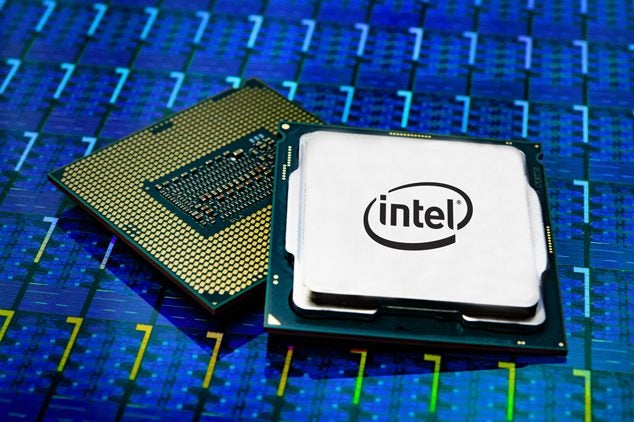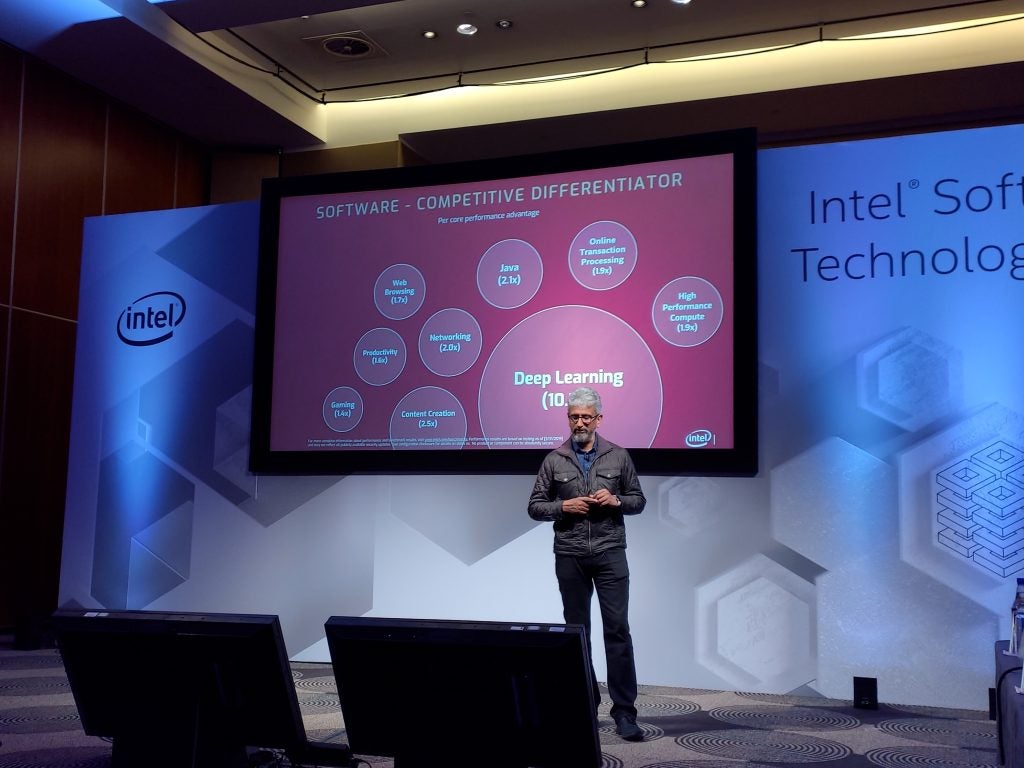Intel has a secret weapon to boost gaming performance – Moore’s Law lives, sort of

CPU hardware improvements will no longer yield big performance gains for gamers and creatives every two years, they’ll come from software optimisations, according to Intel.
Raja Koduri Intel chief architect and senior vice president made the claim during a talk at the Intel Software Technology Day in London on Wednesday.
During the speech Koduri argued this is because the industry is hitting a technology plateau where the hardware gains available to new CPUs will be limited each generation.
“There is no conversation at Intel that can start without talking about Moore’s law. This has been the heartbeat that drove the last 50 years of disruption […] In the first period, the golden era of Moore’s law, you got transitors going at a 2x rate every two years It’s good. Then we entered the multi-core era. Performance per dollar and frequency slowed down a little bit,” he said.
“Now we’re in the architecture era, Here we’ve hit the curse of flattening […] There is still a lot of value in Moore’s law. But at Intel, Moore’s law went beyond transistor density. It was about delivering user value every two years. This was defined by things like performance, features, smaller form factors, security. It was not just the density.”
Related: Best Intel CPU
Moore’s law is a theory that the number of transistors in a dense integrated circuit doubles roughly every two years, bringing with it a number of performance boosts.
There has been ongoing speculation how many more generations Moore’s law will ring true after chip makers manage to adopt a 10nm manufacturing process, like the one seen on Intel’s new Ice Lake laptop CPU family.
Koduri said going forward bigger performance gains will likely come from software optimisations. He said the company has already offered massive per-core performance advances through its software development. These included 1.4x gaming, 2.5x content creation and 1.9x “high performance compute” performance boosts through software optimisations.
Koduri quipped: “How many generations of moore’s law are we talking here? […] That’s like a lifetime of Moore’s law.
“Whether its deep learning, networking, content creation there are enormous deltas in performance from the work we do in software. This is not by accident. The scale of our software investment over 20 years is huge. There is not a code base intel does not touch. We touch 100 operating systems, all the compilers in the world, all the tools all the SDKs.”
Related: Best AMD Ryzen CPU

The exact metrics used to make these measurements were not disclosed during the talk. Intel’s CPU business has faced increased competition from AMD’s Ryzen chips in recent years. The AMD rivals have carved out their own segment of the CPU market by offering buyers competitive prices and improved multi-thread performance, which is an important factor for creatives.
The AMD Ryzen 3 desktop CPU family was unveiled at the same Computex trade show in Taipei as Intel’s 10th Gen Ice Lake laptop series earlier this month.
Related: Best CPU for gaming
AMD’s 3rd generation of Ryzen CPUs follow a 7nm manufacturing process, something which Intel’s chief chipmaking rival claims accounts for a 25% performance boost compared with chips from the 1st Ryzen generation, which are based on a 14nm process. There aren’t currently any confirmed laptop Ryzen 3 chips.


